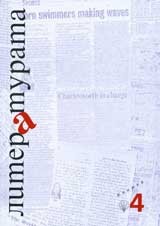




I will present the case study of expanding access to Roma students in Serbia during the implementation of the Decade of Roma Inclusion. I will describe a comprehensive set of actions in enrolment, curriculum and assessment, but will particularly focus on the different types of administrative barriers Roma face when accessing schools and the barriers integration policies face during implementation through the public education system. The analysis of these barriers lends itself to rethinking of the setup of education governance from a human rights based perspective
More...
This presentation questions whether a national school curriculum should be planned in a subject-based way, that is by taking for granted from the start that the curriculum should be built largely around a familiar set of traditional school subjects – mother tongue and literature, mathematics, science, history, geography etc. After a brief historical look at how the curriculum came to be conceived in this way, the presentation explores the aims-based alternative to a subject-based curriculum. As things are at present, at least in a country like England, although general, overall aims are laid down nationally for school education, they have little impact on what schools do. Since familiar discrete subjects are the places where curriculum planning effectively begins, it is their internal aims that tend to dominate; and where links are made, eg in official documentation, between subject requirements and general, overall aims, these are often problematic. A suggested aims-based alternative begins from a defensible set of general aims appropriate to a liberal democratic society, covering aims to do with the student’s own wellbeing, his or her moral and civic dispositions, and preparation for work. From these general aims, further more specific aims are derived. These overlap many of the subject-based aims we currently have, but downgrade some of the latter and offer more flexibility than at present for school activities that lie outside traditional subjects or involve elements drawn from a number of them. As an example, defensible aims to do with social cohesion fit well into the liberaldemocratic framework from which this aims-based curriculum begins. The presentation looks at some of the subaims in this area, to do with dispositions and with the kinds of understanding these require; and points to various kinds of student activity lying outside as well as inside subjectfocused work.
More...
In many nations of the world, educational policy is moving in specific directions, what can best be described as “conservative modernization.” A new alliance has been built that combines a neoliberal faith in markets and privatization, a neoconservative commitment to a return to a romantic view of traditional knowledge, and a new managerial emphases on performance, measurement, and accountability. The result of this combination of movements has often been a transformation in the very meaning of democracy, increased inequality, and a loss of teacher autonomy and respect. There are alternatives to these kinds of policies, ones based on more critically democratic policies and practices. I shall critically examine the dominant reforms that are becoming increasingly influential, demonstrate a number of their negative effects, and describe more thickly democratic possibilities and movements.
More...
This presentation provides both overview and analysis of key elements of a struggle for public higher education free of charge, taking into account local, regional, transitional and broader Europen contexts and circumstances. There are two important aspects in the focus of the presentation: practical (concerned with organization, unions, and direct democracy) and theoretical (concerned with documents, principles, value systems). The presentation particularly focuses on Declaration on science and higher educationwritten by the union ”Academic solidarity“. Authors of the Declarationhave identified various problems regarding the higher educational system and its reforms as well. In order to critically analyse and, ideally, overcome some of those problems, the presentation outlines key principles and ideas from the Declarationas well as problems that implementation of the Declarationmay face: from the structure of the academic community to dominant system of values in the society.
More...











